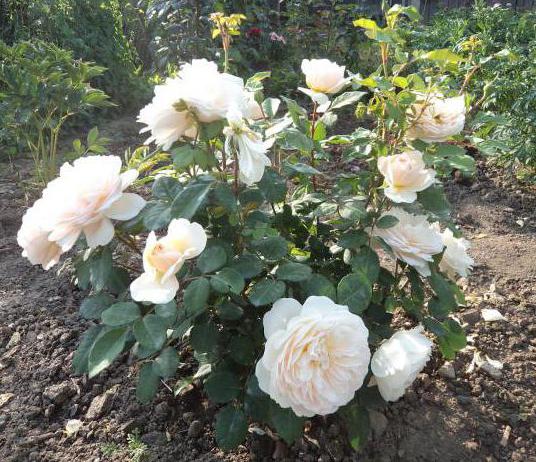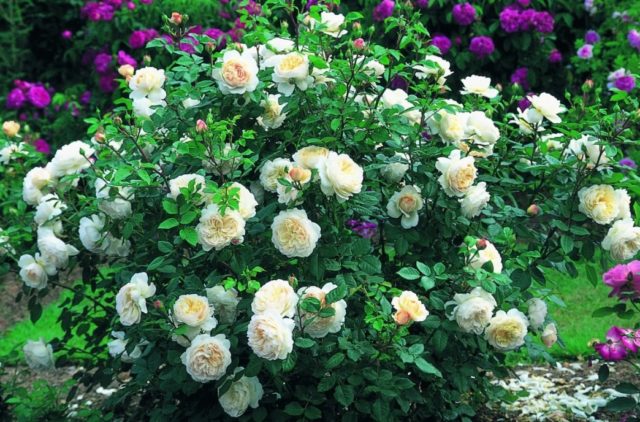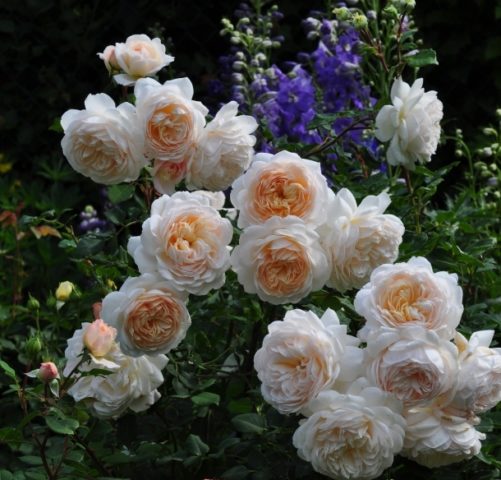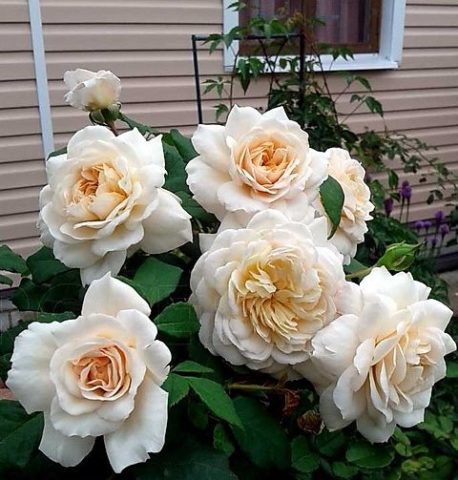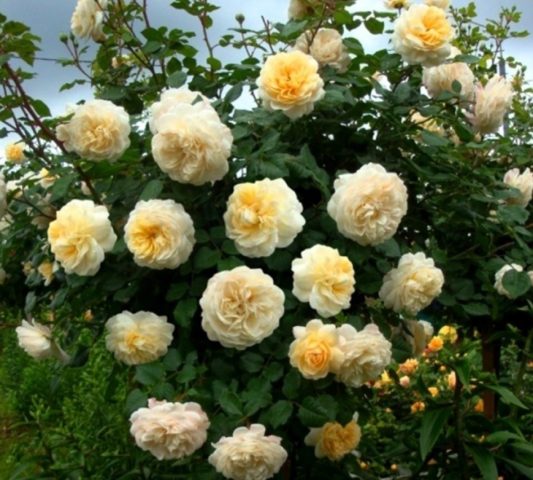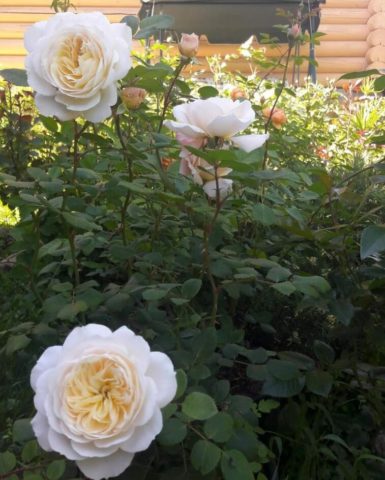Content
Rose Crocus Rose is a classic English park rose that has successfully taken root in the conditions of central Russia. The variety is winter hardy and not too whimsical. However, the bushes require a well-lit, ventilated area with fertile soil. Provided such conditions are provided, the plant will produce beautiful, lush flowers of delicate color throughout the summer.
Breeding history
Crocus Rose was obtained by British breeder David Austin in 2000. He studied classic garden roses of old varieties. The explorer was attracted by lush flowers and high decorative qualities. However, these roses were not very immune. In addition, their flowering was highly dependent on the weather.
Austin set the task of obtaining a variety that, on the one hand, would combine the advantages of lush flowers, and on the other, would get rid of the shortcomings. The result of breeding work was an interesting variety of the park English rose Crocus Rose (Crocus Rose).
It is bred on the basis of the well-known Golden Celebration variety, recognized as the best in 1992. The flower is often called “crocus rose”, as well as “peach” or “apricot ostinka”. The variety has become one of the classic varieties of English roses, considered the best in the world due to the lush flowers of an unusual shape and original color.

Rose Crocus Rose bred by the famous English breeder David Austin (David Austin)
Description of Crocus Rose and characteristics
Crocus Rose is a perennial flowering shrub that blooms throughout the summer. The plant is medium-sized, has good winter hardiness and immunity.
Main characteristics of the English park rose Crocus Rose:
- height 100-120 cm;
- width 100 cm;
- the number of flowers on one shoot is from 3 to 5, their diameter is 10–12 cm;
- color is white, cream, light yellow, apricot;
- the aroma is pleasant, but weak;
- flowering abundant, long, in two waves;
- winter hardiness: zone 6 (withstands frosts down to –29 ° C);
- resistance to black spot is good, to powdery mildew and to rain medium. Due to precipitation, individual buds are damaged.
The bush at the Crocus Rose is very strong, with straight shoots. Medium-sized and at the same time very spreading - the height and width are almost the same (about 100 cm). The leaves are dark green, small, with a matte surface (they do not shine in the light).
The maximum diameter of the flowers is 12 cm. The color is creamy, the core is more intense in color (apricot, yellow), the edges are lighter, almost white. The shape is cup-shaped rosettes, the petals are large, numerous, at first they are cupped, and then strongly open and even bend down.
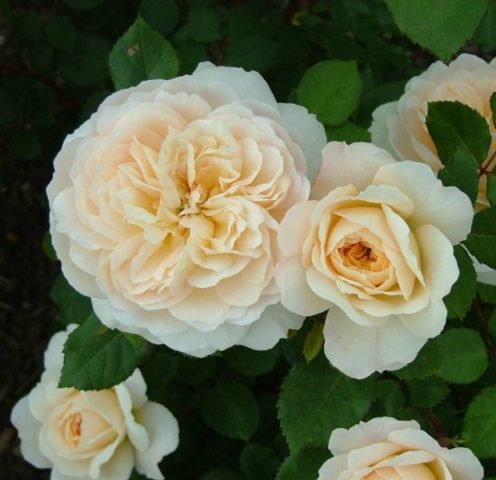
Rose Crocus Rose is distinguished by large flowers of delicate color
Advantages and disadvantages of the variety
The Crocus Rose variety has many advantages:
- excellent decorative qualities: flowers of delicate color, with a transition from apricot to cream and white;
- inflorescences are lush, cupped, abundantly cover the bush;
- flowering lasts all summer - from June to the end of August;
- flowers decorate the garden, they are used to make bouquets;
- good winter hardiness;
- relatively high immunity;
- not very difficult care - regular watering is required, and it is enough to apply fertilizing only 2-3 times per season.
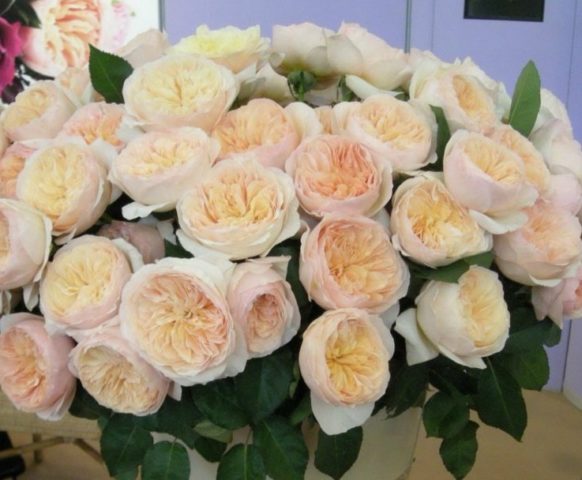
Delicate Crocus Rose flowers are ideal for arranging bouquets
Among the disadvantages of Crocus Rose, flower growers highlight only certain weaknesses:
- slight immunity to powdery mildew;
- the bush can suffer from diseases;
- even in the middle lane, the plant must be carefully covered for the winter (especially in the Urals and Siberia).
Reproduction methods
To preserve all varietal characteristics, Crocus Rose is propagated only vegetatively. The most effective way is grafting. You can start the procedure during the formation of buds or after the end of the first wave of flowering.
The sequence of actions is as follows:
- Several semi-lignified branches are selected and cuttings are cut, each of which should have several healthy buds.
- A straight cut is made from above, an oblique cut from below.
- All leaves and shoots are removed.
- They are immersed in a growth simulator for several hours.
- They are planted in the ground (covered with a jar) or in a box with sand and peat (1: 1), covered with a film.
- Grown a month before the roots appear and transferred to a permanent place.
- After 2 weeks, Crocus Rose seedlings are given nitrogen fertilizer.
Growing and care
In the description of the Crocus Rose rose, a photo of the flower and reviews of its cultivation are given, from which it follows that it is not difficult to care for the plant. However, the variety requires fertile soil. It can be light loam or chernozem with a neutral or slightly acidic reaction (pH from 6.0 to 7.0).
The place should be well lit, although some partial shade is acceptable and even useful (especially in the southern regions). Excessive sunlight will cause the petals to lose color and burn the foliage. Another requirement is moderate moisture: it is undesirable to choose lowlands, since water will accumulate there.
Crocus Rose is planned to be planted in the second half of April or early May, when return frosts are no longer expected. It is allowed to do this in the fall (3-4 weeks before the first frost). The site must be prepared in advance:
- Clean and dig up.
- Add compost or humus in the amount of 2-3 kg per 1 m2.
- If necessary, acidify the soil with 9% vinegar in an amount of 100 ml per 10 liters of water per 1 m2. You can add 2-3 kg of peat or manure. It must be rotten, because fresh will burn the roots.
- If the soil is heavy (clayey), white sand of a coarse fraction is added to it - 200-300 g per 1 m2.
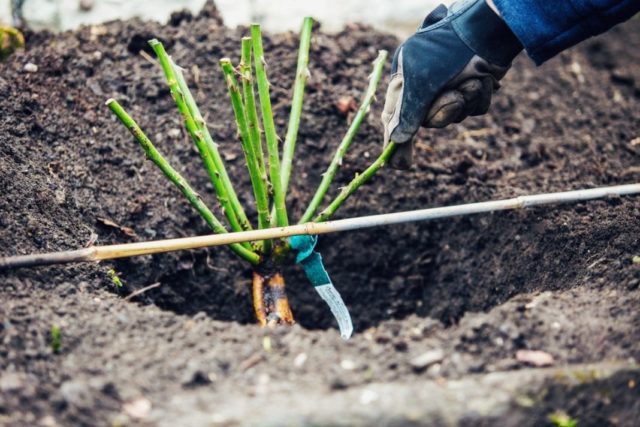
The depth of the planting hole should be such that the roots can freely fit in it (about 60 cm in diameter)
An interval of at least 100 cm is maintained between the holes. In this case, the planting will be dense, you will get a beautiful hedge. Crocus Rose seedlings are rooted, sprinkled with earth and tamped, then mulch is laid: sawdust, spruce branches, peat or other material.
Further care of the rose is not very difficult:
- Regular watering - 1-2 times a week. In drought, the volume is increased, and in the presence of rain, it is reduced to a minimum.
- Top dressing is applied 2-3 times per season: in April nitrogen, during the formation of buds - superphosphate and potassium salt, the same composition can be added again in mid-July to provide a second wave of flowering.
- Regular loosening and weeding.
- Pruning is carried out in spring and autumn. Damaged, dried and dead shoots are removed at the beginning of the season. All branches are cut in autumn, leaving 3-4 healthy buds.
- Shelter for the winter is necessary after the temperature drops below –7 ° C. Crocus rose bushes cut off, leaving shoots 10-15 cm, sprinkle with foliage, earth, humus. From above, you can cover it with spruce branches.
Pests and diseases
In general, the variety is resistant to diseases, sometimes Crocus Rose can suffer from powdery mildew. It is easy to identify it by its characteristic white bloom on the leaves. Damage by other fungal infections is not excluded. To avoid this, it is recommended to treat the foliage with fungicides in May, and repeat the procedure in a month.
To do this, you can use any effective drug (your choice): "Fitosporin", "Ordan", "Profit", "Topaz", "Skor".
Sometimes the bush can suffer from insect infestations. You can deal with them with the help of folk remedies (ash solution with laundry soap, infusion of garlic, chili pepper, mustard powder) or insecticides:
- Fitoverm;
- "Match";
- "Spark";
- "Confidor";
- "Decis";
- Actellik.
Application in landscape design
Rose Crocus Rose is a very attractive plant that often becomes the basis of a flower garden.It is used to create a hedge, as a tapeworm and in compositions:
- Single landing.
- In combination with other horticultural crops.
- In a small flower garden next to the house.
Conclusion
Rose Crocus Rose can decorate any garden. Its neutral creamy flowers with a yellowish core always attract attention, although they do not "irritate" the eyes thanks to the pastel colors. The flower can be bred both in the southern regions and in the middle lane.
Reviews with a photo of a rose Crocus Rose
